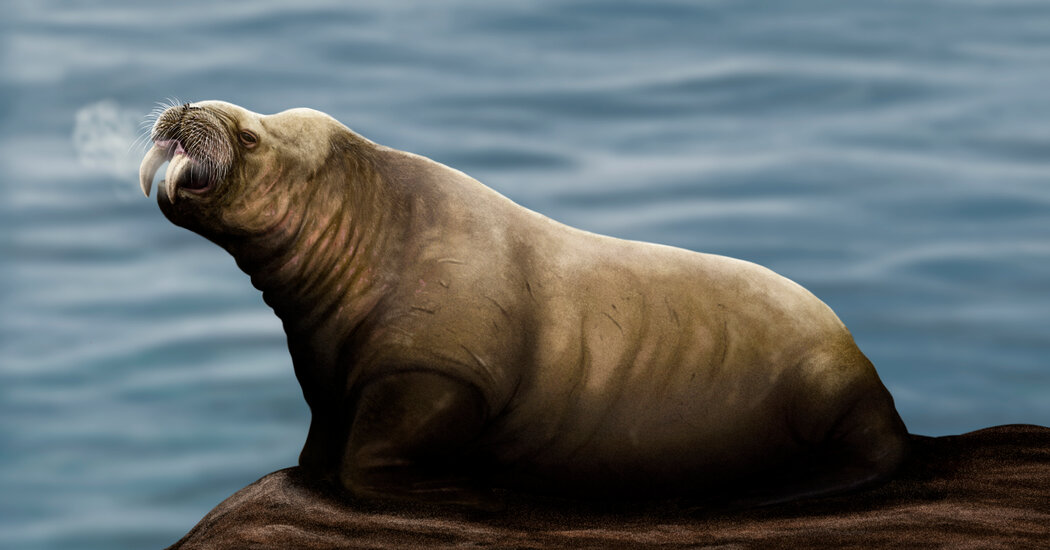Although an extinct animal was from a different group of marine mammals, an examination of fossils showed it evolved a way of eating that was very similar to that of modern walruses.
Some 2 million years ago, a large mammal swimming through the North Atlantic Ocean hauled its bulk up onto a beach, its belly full of clams. It had blubber, tusks and more than likely, whiskers.
Sounds like a walrus, right? In fact, the extinct animal was a member of a different marine mammal genus entirely, as different from a modern walrus as a fox is from your dog. For all the evolutionary differences between the animals, researchers say in a study published on Tuesday in the journal PeerJ Life & Environment, this relative of the walrus may have used a very similar foraging strategy: suction feeding.
Mathieu Boisville, a paleontologist at the University of Tsukuba in Japan and an author of the study, said that “It’s really something quite rare in the field of fossil marine mammals,” for two large animals to develop such similar adaptations, a phenomenon known as convergent evolution.
The false walrus, which Dr. Boisville and his colleagues named Ontocetus posti, belongs to a group of marine mammals that first appeared around five million years ago on the Pacific Coast of North America, before spreading into the Atlantic Ocean via the not-yet closed seaway between North and South America.
Most remains from animals in the group are found around the southeastern shores of the United States. But over several decades, amateurs and paleontologists found scraps of skull and a lower jaw along the coasts and seabed of the North Sea, Dr. Boisville said, not far from regions around the towns of Antwerp in Belgium and Norwich in England. For a long time, the remains were classified as a separate species, Ontocetus emmonsi.
When Dr. Boisville’s team studied the fossils, however, they noticed that the jaws were more walrus-like than those of their southern relatives. Like its close kin, Ontocetus posti had a compliment of teeth, including lower incisors and a large lower canine. But its heavy chin bones were fused — like those of a modern walrus.
